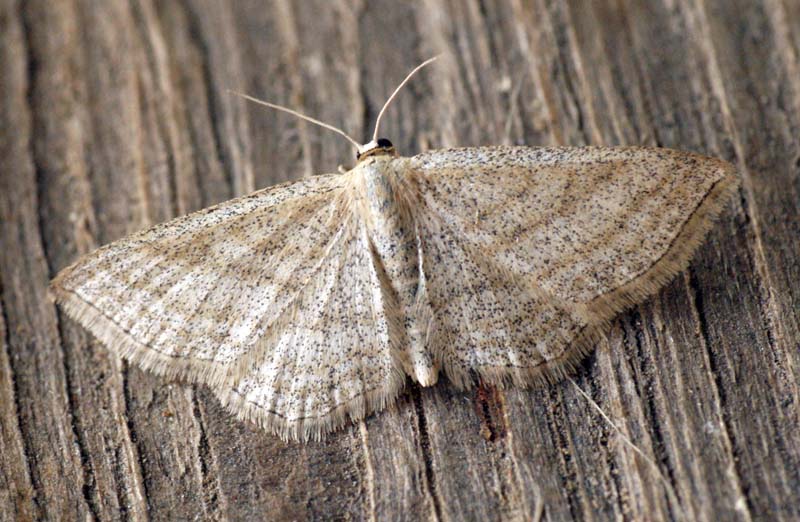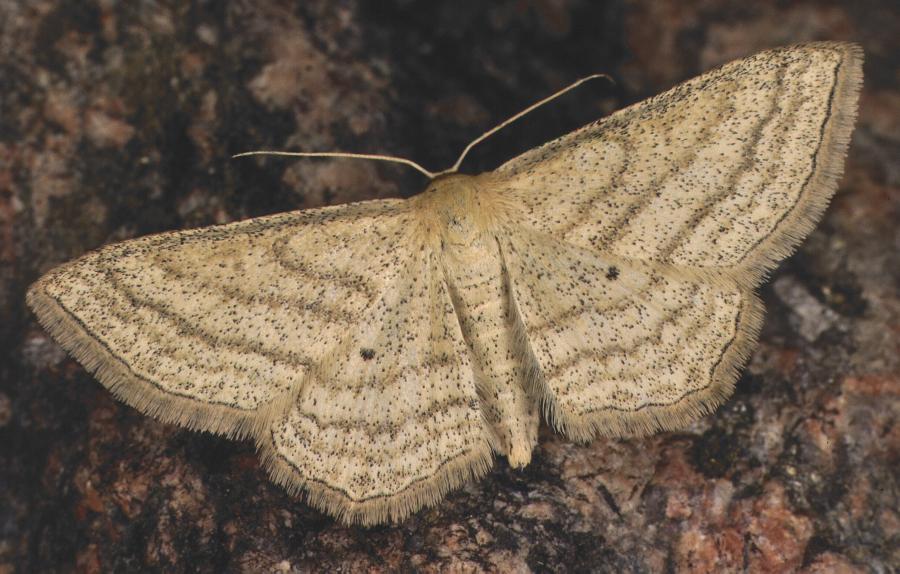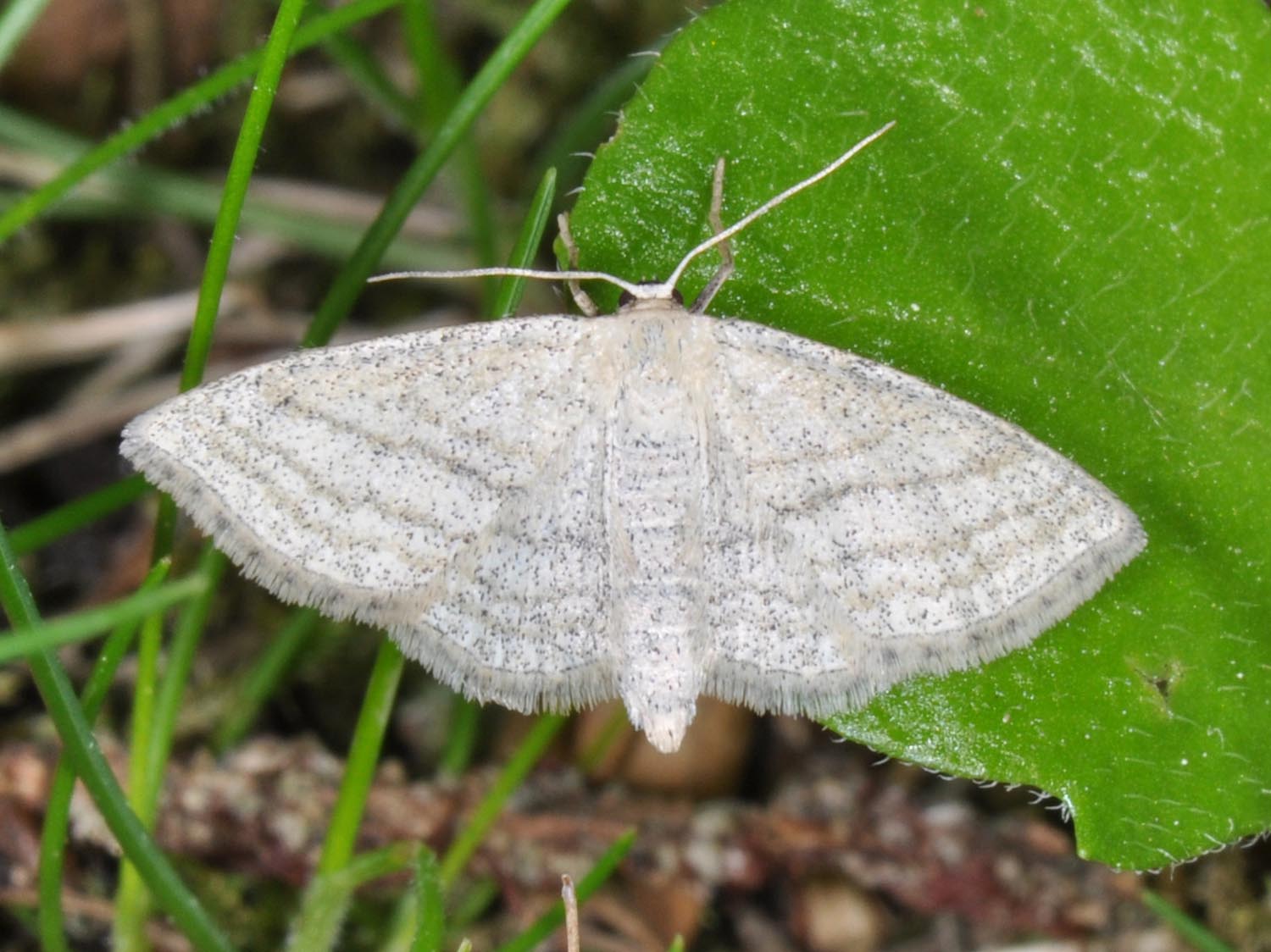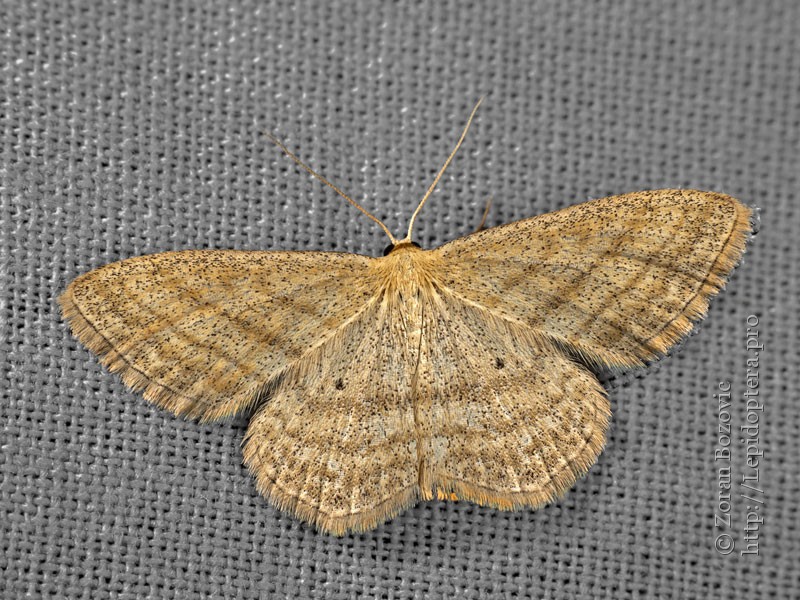Scopula virgulata
Brown Striped Small tensioner ( Scopula virgulata )
The Brown Striped Small tensioner ( Scopula virgulata ), also streaky steppe grass tensioner, Brown Striped Magerrasen small clamps or Striped called steppe grass tensioner, is a butterfly (moth ) from the family of the tensioner ( Geometridae ).
- 6.1 Notes and references
- 6.2 Literature
Features
The moths reach a wingspan of 19-24 mm ( males ) and 19 to 22 mm (females ). The moths of the second generation are much smaller and only reach a wingspan of 16 mm. In addition to the different size of the forewing is slightly slimmer in the females and the apex more pointed pronounced than in the male. In addition, the female and the cross bands are made somewhat clearer. The hind wings are rounded ( compared to other Scopula species). The ground color of the forewings is light brown or gray. The only slightly serrated transverse lines extend approximately just above the front wing and also approximately parallel to each other. They are relatively thin and gray colored brown. The Diskalfleck usually missing on the front wings, but is usually present on the hind wings, although very small. The hem line is also drawn mostly present and dark brown; Frans spots missing. The fringes themselves are light gray / dark gray brindle. The two transverse lines on the hind wings are slightly curled. The forehead is black brown, the apex whitish with an ocher tint. The palps are brown, whitish on the underside. The antennae of the male have deep intersegmental incisions. You are fasciculate - ciliate, with curved cilia. They are 1.4 to 1.7 times as wide as the flagellum.
The oval egg has 20 strong longitudinal ribs and transverse ribs 15-16. It turns orange just before hatching and gets black spots.
The caterpillar is very slim and has a dark, slightly slurred back line with a central bright line and indistinct shoulder. It has side edges and transverse wrinkles. It is whitish colored gray to yellowish. The head is whitish gray with two curved, dark longitudinal stripes.
The squat, reddish brown doll is 7.5 to 8.5 mm long and 2.5 to 2.9 mm thick. The comparatively small cremaster is about as long as wide. The two terminal bristles are strong and pointed, the three laterally accreting bristles are rather thin and hook-shaped curved.
Geographical distribution and habitat
The range of the species extends from isolated occurrences in Portugal, the Eastern Pyrenees and France over Central Europe, Eastern Europe to Siberia and into the Russian Far East and Japan. In Northern Europe, the range extends to the Baltic states and southern Finland, in the south to northern Italy and Romania with isolated occurrences in central Italy. In Asia, there is an isolated occurrence in southern Turkey, otherwise, the southern Caucasus, the southern border of the distribution area dar. In Central Asia, the kind in the Altai Mountains is detected.
The species prefers sandy turf, dry forest margins and meadows, dry grasslands, vineyards, lean sandy soils and flood embankments. But you also comes to changing dry sites in open bogs with a tendency to heath education before and in the moor grass lawn. In Löcknitztal ( Oder-Spree district, Brandenburg ) colonized the type kurzrasige, fully sunlit dry grasslands in the transition zone between grassland and forest. In the Alps it increases locally up to 900 meters, in the Southern Alps to 1300 meters.
Way of life
The type usually forms two generations whose moths fly from May to July and from July to mid-September, often with a gap between the two generations beginning or middle of July. In higher regions and in the northern part of the range, only a generation is formed. The moths fly here from early / mid June to end of July. In the southern part of the range even a partial third generation may be formed, then the moths in late September / early October to fly. The moths are predominantly diurnal, but have also been observed at night with artificial light sources. Females were observed as they ( Bromus erectus ) sitting on upright brome grass, the eggs just dropped into the vegetation, without them to attach to plant parts. The caterpillars are extremely polyphagous and live in numerous herbaceous plants. Be Called:
- Grasses ( Poaceae )
- Sedges ( Carex )
- Alante (Inula )
- Silver birch (Betula alba)
The caterpillars were bred in breeding with the following plants.
- Bilberry (Vaccinium myrtillus)
- Bluegrasses ( Poa )
- Garden salad (Lactuca sativa)
- Finger herb ( Potentilla )
- Dandelion (Taraxacum officinale)
- Red Honeysuckle ( Lonicera xylosteum )
- And other shrubs
Development
According to Ebert, the larvae of the second generation develop very rapidly. Already after 5 days slipped the little caterpillars grouped and already after 45 days then slipped the moths. In another breeding two caterpillars developed very rapidly and resulted moth, while the other caterpillars stopped eating.
Systematics and Taxonomy
The taxon was described in 1775 by Michael Denis Johann Ignaz and Schiffermueller as Geometra virgulata first time. The holotype came from the vicinity of Vienna and is now lost. Geometra strigaria Hübner, 1799 and the unnecessary replacement name Leptomeris sulcaria Hübner, 1825 are junior synonyms. The species is currently divided into five subspecies:
- Scopula virgulata virgulata, Western, Central, Southern and Eastern Europe ( with the exception of the northern Baltic and southern Finland )
- Scopula virgulata rossica Djakonov, 1926, Northern Baltic, Southern Finland, Gotland; dark, with more diffuse drawing Diskalflecke mostly absent, slightly smaller on average
- Scopula virgulata substrigaria Staudinger, 1900, Caucasus, Western Siberia, Altai, Mongolia, ocher, diffuse drawing, somewhat larger, Diskalflecke usually absent
- Available Scopula virgulata subtilis Prout, 1935, Russian Far East, brighter, weak ocher, thinner transverse lines Diskalflecke on the hind wings
- Scopula virgulata albicans Prout, 1934, Japan, whitish color
Endangering
The species is seen in Germany at high risk ( category 2). Extinct she is already in Thuringia, Mecklenburg- Vorpommern and Saxony- Anhalt. In Brandenburg, it is threatened with extinction ( category 1) and in Rhineland -Palatinate and Baden- Württemberg endangered ( category 2). Only in Bavaria it applies "only" to be at risk ( category 3).








